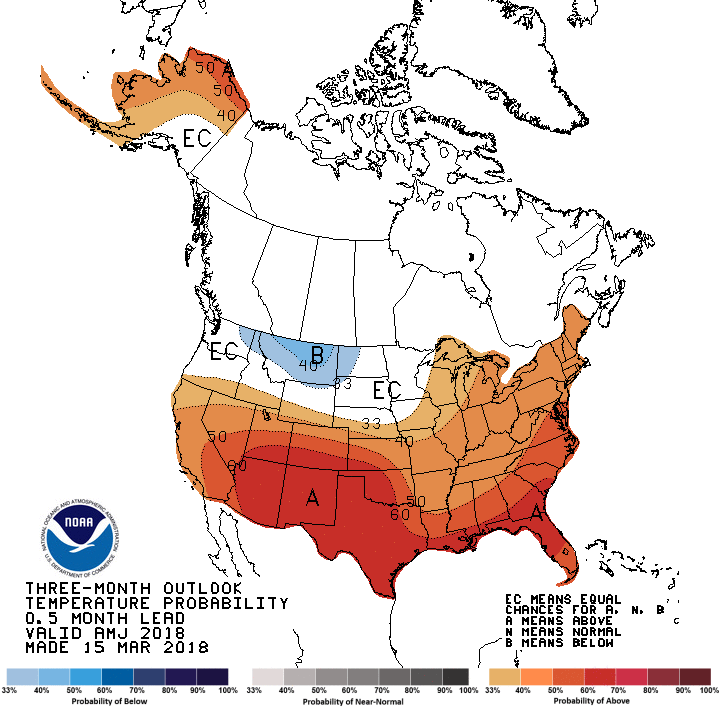If you’ve shopped for an electricity plan in Texas recently, you’ve probably noticed that rates are rising. In fact, some of the energy rates for Texas plans have increased over 30% so far in 2018 and will continue to rise as the summer approaches.
What’s contributing to this rise? In short, it’s simple economics. Understanding the market forces at play in ERCOT will help you make an informed decision about your energy needs going into the summer and avoid a painful utility bill.
Problem #1: Texas Summer Electricity Supply
At the heart of the dramatic rise in retail electricity prices in Texas is the shrinking supply of electricity generation capabilities.
In December 2017, ERCOT announced a forecast in their Capacity, Demand, and Reserves (CDR) report showing a significant tightening of the reserve margin for the summer of 2018.
The reserve margin is the excess capacity over and above what is needed to keep the demand for electricity 100% fulfilled at peak usage times. The reserve margin is important because it indicates the amount of power that’s available in excess over the actual demand. It’s a closely watched number because if it gets too low (or negative), load control measures (i.e. rolling blackouts) can occur and prices can spike dramatically.
The December 2017 forecast projected a 9.3% reserve margin for the summer of 2018, indicating that there is 9.3% more electricity available than the anticipated demand. While it may seem like this represents an adequate supply of electricity, the margin forecast was significantly down from the May 2017 CDR report of 18.9%, and represents a drop of approximately 50% of the electricity reserve. For reference, the NERC reference reserve margin is 13.75%.
To further add to the alarm, ERCOT’s preliminary 2018 summer assessment, released on March 1, 2018, showed a projected reserve margin of just 6.7% based on a razor-thin 4,900 MW of excess capacity. In addition, ERCOT projected a range of scenarios that included negative reserve margins if wind output is unusually low at peak times. ERCOT’s final summer report will be released in May 2018 and will include projections based on the summer weather conditions.
Why did the reserve margin shrink so quickly?
In short, economics. In the December 2017 CDR, ERCOT says the decrease in supply is primarily due to the following:
- The retirement of the several large coal-fired plants (Monticello 1-3, Sandow 4-5, Big Brown 1-2), and one large gas-fired resource (Pearsall 1-3). The combined total loss from these retirements is 4,334 MW.
- 1,143 MW of operational capacity being placed on extended outage or mothballed status.
- The in-service dates for three planned gas-fired resources, totaling 1,193 MW, delayed beyond summer 2018.
- Several other planned renewable generation projects were delayed as well, with a total summer peak average capacity contribution of 881 MW. The total installed capacity of the delayed renewable projects is 3,488 MW. One wind project, with an installed capacity of 500 MW, was cancelled.
The cumulative impact of the recent retirements amounts to about 40% of ERCOT’s coal generating capacity. The transition to updated gas-fired plants and away from uneconomical coal as a fuel source has prompted the closures. The retirement of aging, uneconomical coal plants and lack of immediate replacement in these assets has caused the supply of electricity to decline. Also, renewable energy sources (especially wind) have become more economical for generation companies, but a noteworthy number of these projects have been delayed.
Problem #2: Texas Summer Electricity Demand
On the flip side, Texas’ robust population growth has also contributed to the issue. Texas gained over 400,000 people in 2017, bringing the state’s total population to approximately 28.3 million. The Texas economy remained very strong in 2017 and will likely continue throughout 2018 and beyond as areas such as the Permian Basin continue to ramp up production and use electricity to run everything from gas compressors to fracking operations.
In addition, projections of summer temperatures above normal are also appearing. While these projections are long term forecasts and shouldn’t carry much weight, even a short term heat wave (which inevitably will happen in Texas) combined with an unexpected grid issue could spell trouble for the Texas grid.
In their 3 month outlook released on March 15, 2018, NOAA’s Climate Predication Center predicted a high probability of above normal temperatures and below normal precipitation for the entire state.

In short, increased population, a booming economy, and above normal temperatures equals high peak summer demand for electricity in Texas.
What are the Risks?
The most obvious risk is sharply increasing electricity rates. ERCOT functions under a scarcity pricing model, which basically means that as the supply of electricity becomes more scarce, the price goes up. ERCOT’s wholesale price cap is currently set to $9,000 per MWh, so in theory, your electricity provider may have to purchase real-time electricity at that rate if customer usage surpasses the purchased load. Rates in the Texas retail market began to rise in February 2018 reflecting uncertainty of wholesale prices. These wholesale prices have continued to rise, leading some Retail Electricity Providers (REPs) to either temporarily stop selling 6 month electricity plans, or completely halt new enrollments beginning in April 2018 for a few months and simply service their existing customers until the price risk goes down.
Sharply rising electricity rates will likely impact anyone whose contract will renew between April and August 2018. Prices will continue to go up until REPs see more favorable wholesale electricity prices and become more comfortable that demand will not exceed supply. The risk of paying up to $9,000 per MWh on the spot market is rattling the REPs and impacting the rates that you pay.
Taking this one step further, variable electricity rates are a huge risk in this market. If your home or business electricity contract is on a variable rate, there is a high probability that you will encounter an unpleasant sticker shock on your summer electric bills as rates rise. Depending on your situation, locking in a contract to at least get you through the summer with a fixed rate is a smart move.
Fortunately, power producers are seeing the rising prices and the opportunity to bring some generation facilities out of mothballed status. For example, Talen Energy announced that they would bring the Barney M Davis Unit 1 back into service by May 2018, which would bring an additional 300 MW back into service.
Finally, the most visible risk may be rolling blackouts. With an extremely low reserve margin, it would only take a few power plant issues to cause supply to fall short of demand. While nobody wants this, it wouldn’t be the first time. The most recent blackouts in Texas occurred in February 2011 as unusually cold weather caught generators off guard with facility issues.
How Does This Play Out?
Summer 2018 could be a very bumpy ride for the Texas grid. Texas consumers will see unprecedentedly high electricity rates. Customers on month to month plans or with plans that renew between April and August 2018 will be especially impacted by the high energy rates. Instead of “pain at the pump”, it will be “shock at the switch”.
However, once the delayed generation facilities come on-line late 2018, the reserve margin will likely come back to a more acceptable level and prices will decline going into late 2018 and early 2019. The new gas-fired resources and renewable generation projects will ultimately provide Texas electricity customers with more cost-efficient power generation. Looking forward, this should drive energy rates back down to a more reasonable level.
Longer term, the reserve margin forecasts are uncertain. ERCOT’s Long-Term Hourly Peak Demand and Energy Forecast issued December 2017 shows year-over-year growth in demand going out to 2027. What’s not clear is the amount of peak generation available to the Texas grid in future years based on new technologies and energy efficiency initiatives for residents and businesses.
Concerned about your Texas electricity rate? Compare rates now at ElectricityPlans.com and explore our plans to find the best deal to get you through this summer.
5/17/18 Update: At 4:40pm on Wednesday 5/16, the operating reserve was approximately 3 GW due to temps in the mid-90s in the Houston area. This is only 0.7 GW above the emergency level of 2.3 GW that the grid operator must hold for unexpected grid changes. This led to price spikes near $1,500/MWh.
